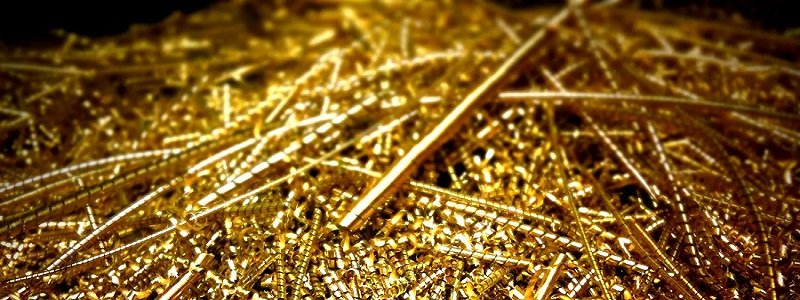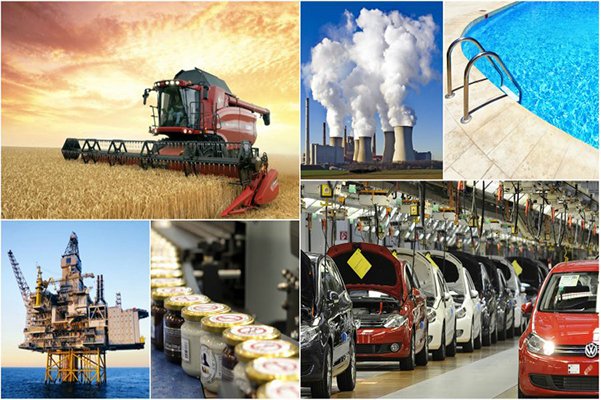What is Brass ?

Copper and zinc are the two essential components of brass. The proportion of these two elements may be adjusted to generate a range of colours and alterations in its mechanical, electrical, and chemical properties; nonetheless, copper typically constitutes a larger proportion of the alloy. It is a substitutional alloy, which means that the atoms of the two components may exchange locations inside the same crystal structure. This is possible because of the nature of the alloy. This kind of alloy has been used since antiquity.
Brass has been and will continue to be a popular material due to its dazzling gold-like appearance. It is often used for door knobs and drawer pulls.Because of its low melting point, high workability (both with hand tools and with contemporary turning and milling machines), durability, and electrical and thermal conductivity, it has also been extensively used in the sculpting and kitchenware industries. Brasses with a higher copper concentration tend to be softer and have a more golden colour, while brasses with a lower copper concentration and, as a consequence, a higher zinc concentration tend to be harder and have a more silvery hue. Brass is often employed in situations where sparks must not be generated, such as in fittings and equipment that are used in close proximity to flammable or explosive compounds.
What is Stainless Steel ?

The fundamental component of stainless steel, which is an alloy resistant to rust and corrosion, is iron. In order for the material to possess the other qualities that are necessary, it must be composed of at least 11% chromium and may also comprise carbon, various other nonmetals, and metals. Stainless steel has a natural resistance to corrosion because chromium generates a passive layer that may preserve the substance and self-heal in the presence of oxygen. This characteristic lends stainless steel its name.
In several applications, the alloy's brightness and corrosion resistance are advantageous qualities.Rolling stainless steel may produce a wide variety of products, including sheets, plates, bars, wire, and tubing, among other shapes. They may be used in a number of products, including cookware, cutlery, surgical instruments, significant household appliances, automobiles, building materials for enormous constructions, industrial equipment, storage tanks, and both food and chemical supply tankers.
Properties of Stainless Steel
Stainless steel is utilised widely in the production of a wide range of parts and components across a number of sectors due to its numerous desirable properties.It has a very high resistance to corrosion because of the chromium that it contains, which makes it quite durable. Compared to steels without chromium, steel containing at least 10.5% chromium is about 200 times more resistant to corrosion. Customers will also benefit from the material's great strength and durability, resilience to both high and low temperatures, enhanced formability and fabrication ease, minimal maintenance needs, long-lasting, aesthetically pleasing look, and eco-friendly and recyclable nature. After installation, stainless steel does not need any more treatment and does not need to be coated or painted.
Properties of Brass
Brass has more malleability than bronze and zinc. Due to its flow characteristics and relatively low melting point (900 to 940 °C or 1,650 to 1,720 °F, depending on composition), brass may be cast with modest effort. By adjusting the copper-to-zinc ratio, it is possible to produce both hard and soft brass. Brass has a density ranging from 0.303 to 0.315 pounds per cubic inch, or 8.4 to 8.73 grams per centimetre cubed. Nowadays, around 90 percent of all brass alloys are recycled. Due to the fact that brass is not ferromagnetic, it is feasible to separate ferrous scrap from non-ferromagnetic brass scrap by moving the scrap near a powerful magnet. Brass scrap is melted and recast into billets, which are then extruded into the desired form and dimensions. Owing to the considerable malleability of brass, the metal may often be machined without the need of cutting fluid; however, there are a few exceptions. The addition of aluminium to brass increases its strength and corrosion resistance. In addition, aluminium helps to the creation of a highly beneficial hard layer of aluminium oxide (Al2O3) on the surface of the material. This layer is thin, translucent, and self-repairative. Tin, which has a similar effect and is often employed in saltwater-related circumstances, has a comparable effect (naval brasses). Because to the inclusion of iron, aluminium, silicon, and manganese in its composition, brass resists wear and tear. Even at a concentration as low as one percent, when iron is added to a brass alloy, the resultant alloy exhibits magnetic attraction.

Corrosion Resistance of Stainless Steel vs Brass
Stainless steel. offers remarkable corrosion resistance in a wide variety of hostile environments and when exposed to a variety of corrosive agents. In environments containing chlorides, pitting and crevice corrosion are also conceivable. It is possible for stress corrosion to cause cracking at temperatures over 60 degrees Celsius. Stainless steel has a good oxidation resistance in intermittent service up to 870 degrees Celsius and in continuous service up to 925 degrees Celsius. If corrosion resistance in water is essential, however, extended use at temperatures between 428 and 860 degrees Celsius is not recommended. Due to its resistance to carbide precipitation, 304L is a good material for this application.
Zinc is the primary component of the alloy that makes up Brass; other defined alloying elements, such as iron, aluminium, nickel, and silicon, may or may not also be present. There are three primary groups of brasses that make up the wrought alloys. There are five primary families of brasses that make up the cast alloys. There is some room for variation within the limits provided for the ingot that will be remelted and used to make castings. Zinc is combined with copper in these alloys in proportions ranging from roughly 5% all the way up to 45%. As a general rule, corrosion resistance diminishes as zinc concentration rises. It is common practise to differentiate between alloys having a lower zinc content (less than 15%) and those with a greater zinc content (more than 15%) in terms of their resistance to corrosion. The second edition of the traditional textbook on corrosion fundamentals is a publication that is both up-to-date and exhaustive in its coverage of the topic.
 "GOVERNMENT RECOGNISED STAR EXPORT HOUSE"
"GOVERNMENT RECOGNISED STAR EXPORT HOUSE"



 India
India Japan
Japan Russia
Russia United States
United States Saudi Arabia
Saudi Arabia Kuwait
Kuwait Singapore
Singapore Malaysia
Malaysia UAE
UAE Germany
Germany Italy
Italy China
China UK
UK Canada
Canada Iran
Iran Thailand
Thailand South Korea
South Korea Turkey
Turkey Morocco
Morocco Costa Rica
Costa Rica Kazakhstan
Kazakhstan Philippines
Philippines Egypt
Egypt Vietnam
Vietnam Oman
Oman Australia
Australia Qatar
Qatar Portugal
Portugal Mexico
Mexico Brazil
Brazil France
France South Africa
South Africa Jordan
Jordan Spain
Spain Hong Kong
Hong Kong Netherlands
Netherlands Indonesia
Indonesia Taiwan
Taiwan Nigeria
Nigeria Bangladesh
Bangladesh Iraq
Iraq Ukraine
Ukraine Poland
Poland Romania
Romania Cyprus
Cyprus Angola
Angola Colombia
Colombia Norway
Norway Chile
Chile Tobago
Tobago Greece
Greece Czechia
Czechia Belgium
Belgium Sri Lanka
Sri Lanka Myanmar
Myanmar Venezuela
Venezuela